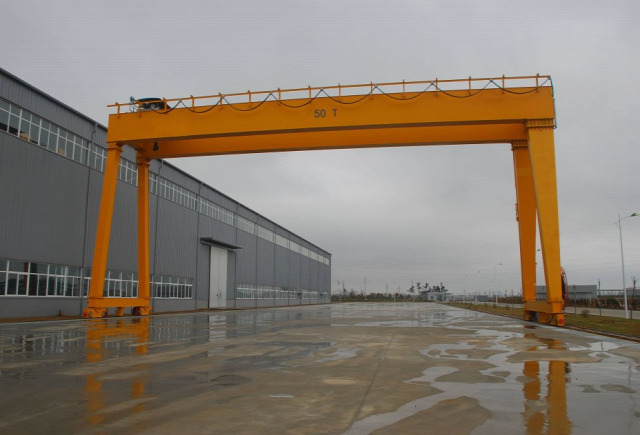Safety is paramount in operating a 50-ton gantry crane to ensure the well-being of workers and the protection of equipment and materials. Implementing effective safety measures is essential to mitigate risks and prevent accidents. In this article, we will explore valuable tips and best practices to improve the safety of a 50-ton gantry crane operation.

Comprehensive Training and Certification
Prioritize comprehensive training programs for operators and other personnel involved in the operation of a 50-ton gantry crane. Ensure that operators receive proper training on crane operation techniques, load handling, and safety protocols. Training should cover emergency procedures, risk assessment, and the use of personal protective equipment. It is crucial to ensure that operators are certified and competent to operate the specific type of gantry crane 50 ton. Regular refresher training sessions and evaluations should be conducted to reinforce safe operating practices and keep operators up to date with the latest safety standards.
Rigorous Inspection and Maintenance
Regular inspection and maintenance are crucial to identify potential hazards and address them promptly. Establish a rigorous inspection schedule for the gantry crane, focusing on critical components such as the hoist, trolley, brakes, wire ropes, and control systems. Conduct thorough visual inspections before each shift and perform more detailed inspections at regular intervals. Implement preventive maintenance measures to address issues before they lead to accidents or equipment failure. Ensure that inspections and maintenance activities are documented for reference and accountability.
Load Capacity and Rigging
Understanding and adhering to the load capacity of the 50-ton gantry crane is vital for safe operations. Never exceed the maximum rated capacity specified by the manufacturer. Properly calculate the weight of the load and account for factors such as dynamic loading and environmental conditions. Ensure that the crane's rigging equipment, including slings, shackles, and hooks, is in good condition and appropriate for the intended load. Regularly inspect rigging gear for signs of wear, corrosion, or damage, and replace any defective components. Train operators on proper load rigging techniques, including load balance and secure attachment, to prevent accidents caused by load instability.
Effective Communication and Signaling
Establish clear and effective communication protocols between operators, spotters, and ground personnel. Ensure that all parties involved are trained in using standardized hand signals or radio communication systems. Emphasize the importance of continuous communication during double beam gantry crane operations, especially during critical maneuvers such as load lifting, swinging, and positioning. Maintain a clear line of sight between the operator and the load, and use appropriate signaling methods to ensure safe operations. Implement a system to warn and protect personnel working in the vicinity of the crane's operational area, such as restricted access zones and audible alarms.
Emergency Response Planning
Develop and communicate a comprehensive emergency response plan specific to the 50-ton gantry crane operations. The plan should include procedures for addressing potential emergencies, such as power failures, equipment malfunctions, or adverse weather conditions. Train operators and personnel on emergency response protocols, evacuation routes, and first aid procedures. Establish a clear chain of command for reporting incidents and ensure that all workers are familiar with the emergency contact information. Regularly conduct drills and simulations to test the effectiveness of the emergency response plan and identify areas for improvement.
Conclusion
Improving the safety of a 50-ton gantry crane operation requires a proactive approach and a focus on training, inspection, load capacity, communication, and emergency response planning. By implementing these tips and best practices, operators can create a safer work environment, mitigate risks, and protect the well-being of all personnel involved.

